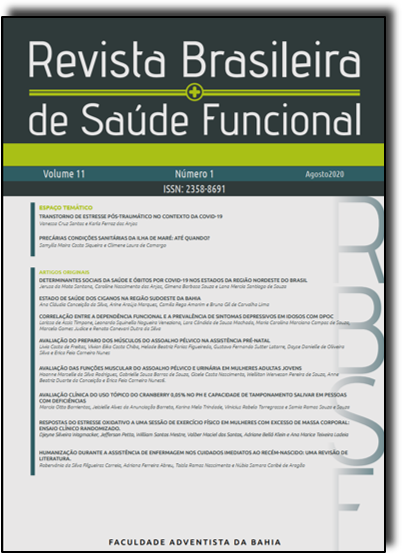CLINICAL EVALUATION OF TOPICAL CRANBERRY GEL IN 0.05% AND BUFFERING CAPACITY OF THE SALIVA IN PEOPLE WITH DISABILITIES
DOI:
https://doi.org/10.25194/rebrasf.v8i2.1278Abstract
Introduction: In the face of qualitative changes in saliva, commonly presented by disabled people, the option of using chemical herbal agents as adjunct to oral health promotion emerges as a promising option for the control of oral biofilm without significant adverse events.
Objective: This was an uncontrolled clinical trial that evaluated the topical effect of 0.05% cranberry gel on the quality of saliva in disabled people.
Methodology: Twenty-five patients were enrolled, and their participation was authorized through their legal representatives. The 0.05% cranberry gel was topically applied to the buccal surface of all present teeth, for a period of 1-2 weeks, with no need to rinse water or remove the gel after application. Unstimulated saliva samples were collected before the beginning of the applications and after two weeks of continuous use of the gel in order to analyze the salivary buffering capacity and pH. Comparatively, the same group of patients underwent new salivary analyzes that were obtained before and after three months of oral hygiene instructions and dietary guidelines.
Results: After the topical application of 0.05% cranberry gel, there was an increase from 24% to 40% of patients with an ideal salivary pH (6.8 – 7.2), and a reduction of 50% of patients who had an acid salivary pH (pH < 6.8). About 56% of patients had their salivary buffering capacity increased. The mechanical intervention, through oral hygiene promotion measures, did not generate statistically significant changes in salivary pH, but it did increase the buffering capacity values in 100% of patients.
Conclusion: The 0.05% cranberry gel evaluated proved to be a promising resource in the recovery of salivary quality.


